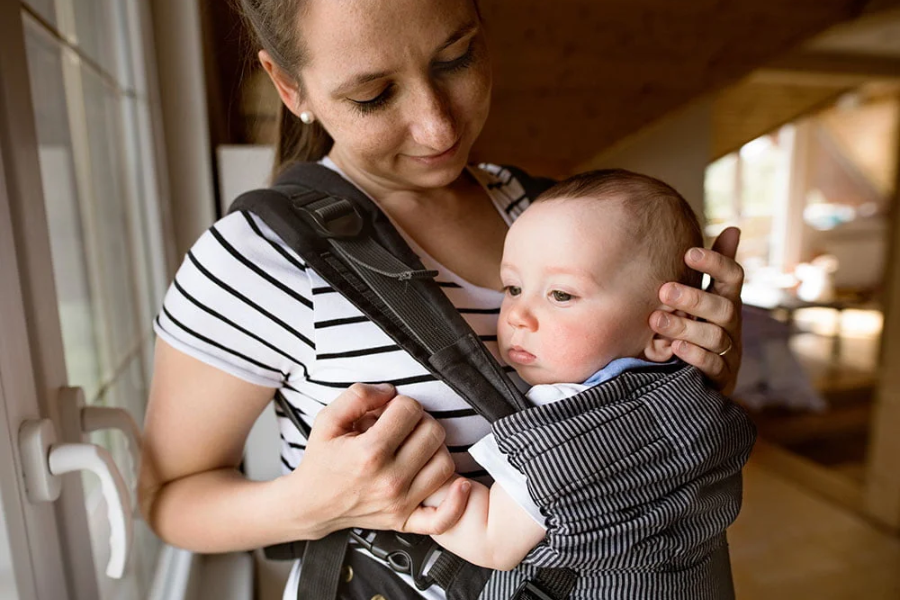The Comprehensive Guide to Slinguri: Benefits, Drawbacks, and Best Practices
For centuries, various cultures have relied on slings, or “slinguri” as they are known in some regions, to carry their babies close to their bodies. Modern slinguri provide a blend of tradition and convenience, offering a secure and comfortable way for parents to bond with their infants. This detailed guide explores the advantages and disadvantages of slinguri, provides insights into different types, and offers essential safety and usage tips to ensure a positive babywearing experience.
The Allure of Slinguris: Exploring the Advantages
For Parents:
- Enhanced Bonding: Slinguri facilitate close physical contact between parent and child, fostering a deep sense of security and connection. This proximity can enhance emotional bonds and support the baby’s social and emotional development.
- Convenience and Freedom of Movement: One of the primary benefits of slinguri is the ability to carry your baby hands-free. This allows parents to multitask, whether it’s running errands, doing household chores, or navigating through busy environments, without compromising their ability to keep their baby close.
- Promotes Breastfeeding: Many slinguri designs allow for easy, discreet breastfeeding. The sling’s adjustable nature provides parents with the flexibility to nurse comfortably in various settings.
- Reduced Back Strain: Compared to traditional carriers, slinguri can distribute a baby’s weight more evenly across the body. This balanced distribution can potentially minimize back strain, particularly for shorter carrying durations.
For Babies:
- Soothes Fussy Babies: The rhythmic movement and the warmth of a slinguri can help soothe fussy or crying babies. The close contact often provides a calming effect that can ease discomfort and help babies feel more secure.
- Supports Early Development: Slinguri can support healthy hip and spine development by promoting a natural, ergonomic posture. Proper positioning in a slinguri can help in the baby’s physical development during their formative months.
- Promotes Skin-to-Skin Contact: Skin-to-skin contact facilitated by slinguri helps regulate the baby’s body temperature and enhances their emotional well-being. This direct contact is also beneficial for newborns’ bonding with their parents.
- Sense of Security: The constant closeness to a parent provides a sense of safety and familiarity, which can be especially comforting for babies in unfamiliar or new environments.
Additional Advantages:
- Traveling: Slinguri can be invaluable when traveling, offering a convenient way to calm and secure the baby while on the move.
- Cultural Connection: For many parents, using a slinguri can connect them to traditional babywearing practices, integrating cultural heritage into modern parenting.
- Comfort for Colic: The upright positioning and gentle pressure of a slinguri may alleviate some discomfort associated with colic, potentially providing relief for both the baby and the parent.
Unveiling the Other Side of the Coin: Potential Downsides of Slinguris
Learning Curve:
Mastering the art of using a slinguri can require practice. New parents might need time to learn proper positioning and carrying techniques to ensure comfort and safety for both themselves and their baby.
Comfort Considerations:
- For Parents: Extended carrying sessions can lead to discomfort in the shoulders and back. Proper adjustment and choosing a slinguri with appropriate padding can help mitigate this issue.
- For Babies: Incorrect positioning or using a slinguri not suited to the baby’s age and development may cause discomfort. Ensuring the slinguri is the right fit and learning proper usage techniques can help avoid these problems.
Limited Weight Capacity:
Most slinguri are designed for carrying infants and may not be suitable for carrying heavier toddlers for long periods. As babies grow, parents may need to transition to different types of carriers or supports.
Heat Concerns:
Slinguri can trap heat, which may be uncomfortable for both parents and babies, especially in warm climates. Opting for breathable fabrics and adjusting clothing layers can help manage heat effectively.
Additional Considerations:
- Safety Risks: Improper use of a slinguri can pose safety risks, such as airway obstruction or inadequate head and neck support. It’s crucial to understand and follow safe carrying practices.
- Suitability: Slinguri may not be ideal for every baby or parenting style. Some babies might prefer the structure and support offered by traditional carriers.
- Privacy Concerns: Discreet breastfeeding may be more challenging with some slinguri compared to carriers with covers or additional privacy features.
Striking a Balance: Making an Informed Choice
The decision to use a slinguri should be based on individual needs and preferences. Here are some tips to help make an informed choice:
- Consider Your Lifestyle: If you value convenience and hands-free carrying, a slinguri might be an excellent addition to your parenting toolkit. Assess how frequently and in what contexts you’ll use the slinguri.
- Think About Your Baby’s Needs: Choose a slinguri that matches your baby’s age, temperament, and developmental stage. Different styles offer various benefits depending on the baby’s needs.
- Research Different Types: Familiarize yourself with various sling styles, materials, and brands. Each type offers unique benefits and may suit different carrying preferences.
- Seek Guidance: Attend a babywearing class or consult with a lactation consultant to receive personalized advice on safe and effective slinguri use.
- Start Slowly: Begin with short carrying sessions and practice proper positioning to ensure both you and your baby are comfortable with the slinguri.
Exploring the Diverse World of Slings
Ring Slings:
Ring slings are simple and adjustable, featuring rings that allow for easy tightening of the fabric. They are particularly useful for newborns and offer a quick and convenient carrying solution.
Wrap Slings:
Wrap slings consist of long pieces of fabric that can be wrapped in various configurations. They provide versatility and a customized fit, although they may require practice to master the wrapping techniques.
Pouch Slings:
Pre-sized and easy to use, pouch slings have a pocket-like design that holds the baby securely. They are ideal for newborns and short carrying periods.
Hybrid Slings:
Hybrid slings combine elements of different styles, offering a mix of convenience and adjustability. These slings can provide the best of both worlds for parents seeking a balanced solution.
Additional Sling Considerations:
- Material: Opt for breathable and comfortable fabrics like cotton or linen, which are suitable for both parent and baby.
- Size: Choose a sling that fits your body size and carrying preferences to ensure comfort and ease of use.
- Brand and Design: Select reputable brands known for quality construction and safety features to ensure the slinguri meets your needs and adheres to safety standards.
Safety First: Essential Considerations for Babywearing
Safety is crucial when using a slinguri. Here are some key points to remember:
- Proper Positioning: Ensure the baby’s airway remains clear and their chin is off their chest to prevent airway obstruction. For newborns, maintain a high and snug position.
- Support: Provide adequate head and neck support for young babies who are unable to hold their heads up independently.
- Leg Position: Encourage a natural “frog-legged” position with knees bent and slightly wider than hips for infants.
- Body Temperature: Monitor the baby’s temperature to avoid overheating. Choose lighter fabrics or adjust clothing layers as needed.
- Carrying Time: Avoid long carrying sessions without breaks to prevent discomfort for both parent and baby.
Additional Safety Tips:
- Regularly inspect the slinguri for any loose threads or damage.
- Avoid carrying a sleeping baby in a slinguri for extended periods.
- Be aware of tripping hazards while carrying your baby.
- Consult with a healthcare professional if you have any concerns about slinguri use.
Mastering the Art of Babywearing: Helpful Tips and Resources
Successful babywearing requires practice and proper technique. Here are some helpful tips to enhance your experience:
- Seek Guidance: Attend babywearing classes or workshops to learn correct carrying techniques for different sling styles and stages of your baby’s development.
- Practice Makes Perfect: Start with short sessions and gradually increase as you become more comfortable with the slinguri.
- Adjust as Needed: Don’t hesitate to make adjustments to the slinguri throughout a carrying session to ensure a secure and comfortable fit.
- Listen to Your Body: Take breaks as needed to avoid discomfort or strain.
- Listen to Your Baby: Pay attention to your baby’s cues and adjust the slinguri or take breaks if they seem fussy or uncomfortable.
Explore the latest trends and styles in sweatshirts at Sweatlar.com.






